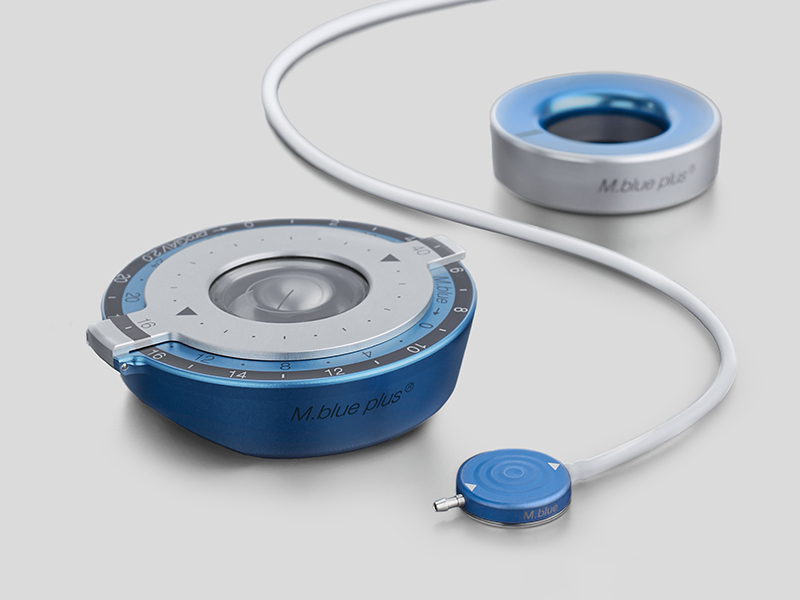You have successfully logged out.
Not registered yet?
Neurosurgery
Hydrocephalus & ICP management
Gravitational valves improve patient outcomes

Medical Professional
This information is meant for medical professionals only. Please confirm that you are a medical professional before accessing the information.
Confirm Yes, I am a health care professional. Cancel No, I am not a health care professional.Hydrocephalus shunts and intraventricular neuroendoscopy
An alternative procedure to shunt surgery is an endoscopic third ventriculostomy (ETV). Instead of inserting a shunt, the surgeon makes a hole in the floor of third ventricle to allow the trapped cerebrospinal fluid (CSF) to escape to the brain's surface, where it can be absorbed. Aesculap offers various intraventricular neuroendoscopic systems: MINOP®, PaediScope® and MINOP® InVent.
MIETHKE gravitational shunts offer special protection to avoid position-dependent complications such as over- and underdrainage, with positive clinical outcomes for the patient and a significant reduction of overdrainage events. [1-4]
Our product portfolio at a glance
Related products
Digital applications
MIETHKE HC&ME App – Patient diary app
Google Play preview and free download >>
Google Play preview and free download >>
Get in touch with our Neurosurgery experts
Neurosurgery contact form[1] Tschan CA, Antes S, Huthmann A, et al. Overcoming CSF overdrainage with the adjustable gravitational valve proSA. Acta Neurochir (Wien). 2014;156(4):767-76; discussion 776.
[2] Suchorska B, Kunz M, Schniepp R, et al. Optimized surgical treatment for normal pressure hydrocephalus: comparison between gravitational and differential pressure valves. Acta Neurochir (Wien). 2015;157(4):703-9.
[3] Lemcke J, Meier U, Muller C, et al. Safety and efficacy of gravitational shunt valves in patients with idiopathic normal pressure hydrocephalus: a pragmatic, randomised, open label, multicentre trial (SVASONA). J Neurol Neurosurg Psychiatry. 2013;84(8):850-7
[4] Sprung C, Schlosser HG, Lemcke J, et al. The adjustable proGAV shunt: a prospective safety and reliability multicenter study. Neurosurgery. 2010;66(3):465-74.
[5] Chari A, Czosnyka M, Richards HK, Pickard JD, Czosnyka ZH. Hydrocephalus shunt technology: 20 years of experience from the Cambridge Shunt Evaluation Laboratory. J Neurosurg. 2014;120(3):697-707.
[6] Antes S, Stadie A, Muller S, et al. Intracranial Pressure-Guided Shunt Valve Adjustments with the Miethke Sensor Reservoir. World Neurosurg. 2018;109:e642-e50.
[7] Freimann FB, Schulz M, Haberl H, et al. Feasibility of telemetric ICP-guided valve adjustments for complex shunt therapy. Childs Nerv Syst. 2014;30(4):689-97.
[8] Thompson S, Thorne L, Toma A, et al. Telemetric monitoring of ICP within a shunt system. A single centre experience including the first in vivo comparison versus conventional intraparenchymal monitoring. Fluids and Barriers of the CNS. 2017;14(Suppl 1):A63.
Stay connected with My B. Braun
With your personalized account, your online experience will be easier, more comfortable and safe.



